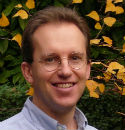 |
|
Professor and Director, Centre for Quantum Information and Communications, Université libre de Bruxelles
Nicolas J. Cerf is a full professor at Université libre de Bruxelles, where he leads the Centre for Quantum Information and Communication. His team is among the leaders in Quantum Information Science, and has pioneered several notable developments in quantum cryptography, communication, and computation. He received an Engineering Degree (1987), a M.Sc. in Physics (1988), and a Ph.D. in Physics (1993) from the Université libre de Bruxelles. He was then a Marie Curie postdoctoral fellow at the Division of Theoretical Physics in Orsay for two years, and a Senior Research Fellow at the California Institute of Technology for three years. He also held more recently a visiting position at the Massachusetts Institute of Technology and is currently a member of the Royal Academies for Science and the Arts of Belgium. He received a Marie Curie Excellence Award, granted in 2006 by the European Commission.
Abstract
I will first discuss the impossibility of purely Gaussian quantum error correction when applied to a Gaussian channel such as the attenuation channel, and will prove a related no-go theorem. More precisely, I will show that a channel parameter, denoted entanglement degradation, can only increase when using a Gaussian encoder and decoder. Then, a realistic Gaussian quantum erasure-correcting code will be exhibited, which protects the transmission of continuous-variable quantum states in a probabilistic lossy channel that is intrinsically non-Gaussian. This continuous-variable code will also be converted into a probabilistic continuous-variable erasure filtration scheme, which may be applicable to realistic optical transmissions with random fluctuating attenuation. Finally, the recent experimental optical demonstration of this scheme by a Danish group will be illustrated.
|



